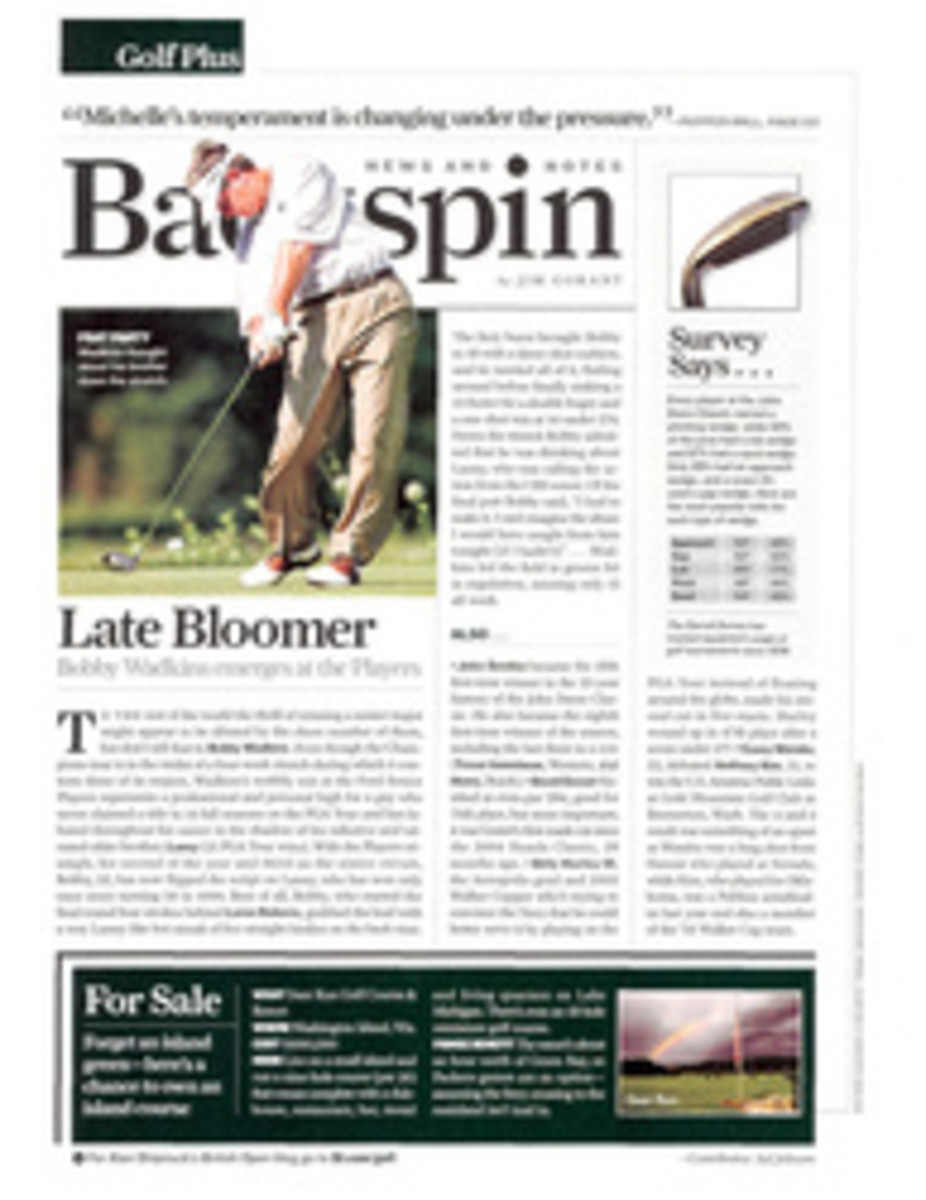
Torrey Pining
At about the timethe USGA brought the 2002 U.S. Open to Bethpage State Park, it announced thatthe '08 Open would be held at Torrey Pines, a municipal course. Presumably theUSGA picked these venues to counteract the belief that golf is an exclusivesport; the nation's open championship should be played, at least occasionally,at a public venue.
The incongruityis that at Torrey the USGA's decision has had the effect of limiting play forthe citizens of San Diego. Fifty years after a public vote mandated that Torreybe operated on behalf of the city's residents, who own it, Torrey Pines is nowless accessible physically and financially to San Diegans.
Last month, afterlong and contentious debate (Golf Plus, June 13), the city council voted 7--1to change the way the two courses at Torrey are operated. The council raisedresident greens fees, eliminated the majority of tee times for the men's andwomen's clubs, increased slots for tourist play during prime-time hours andallocated millions of dollars in greens-fee revenue for multimillion-dollarcapital projects of questionable need. Overwhelming opposition from most publicgolfers in San Diego was all but ignored.
In taking suchactions, a city desperate for money has effectively handed the courses toprivate interests--primarily concessionaires and the tourism industry--eager tocash in on the U.S. Open bonanza. So much for the USGA's decision to bring theOpen to muni golfers.
This is not allthe USGA's fault, but the association should feel some obligation to help. Thusfar, the USGA's only contribution has been a tacit threat from senior directorof competitions Mike Davis, who said, "If the USGA collectively feels wedidn't get cooperation from the city and the community, then that would be seenas a big factor going forward [in awarding future Opens]."
Many people(including the USGA) have acknowledged that compromise on the access and costissues was easily attainable, but every position offered by the public wasrejected by the city. Instead of dropping ominous quotes, the USGA should standbehind its own rhetoric about supporting golf "at all levels" and useits influence to right the wrongs that have occurred here.
Finally, SanDiego's mayor and city council need to take note of the USGA's threat aboutfuture U.S. Opens. The state of New York handled similar pressures at Bethpageby keeping in mind that residents are their main customers. Unlike at TorreyPines, capital projects at Bethpage are privately financed, resident greensfees are kept remarkably low and access for resident golfers is paramount. Suchcivic-mindedness and lack of turmoil helped smooth the way for the USGA to giveBethpage another U.S. Open, in 2009.
Can the USGA andthe politicians in San Diego work together to give muni golfers everywheresomething to truly celebrate, or will the U.S. Open's arrival at a stellarmunicipal course remain a hollow victory for all of us?
Michael Zucchetis a former San Diego City Council member.
TRUST ME
by JAMES P. HERRE
Carolyn Bivens should be praised for bringing threenew events to the LPGA.
New Math
Nick Faldo to become the face and voice of the Golf Channel in 2007
LOOKS + [BLUNTNESS ÷ WIT] × MAJOR CRED – SIDEKICK =MR. GOLF CHANNEL
 
TWO PHOTOS
ROBERT BECK (ZUCCHET, TORREY PINES)
CLIFF-HANGER Can Zucchet (inset) restore resident privileges?
PHOTO
SERGE THOMANN/WIREIMAGE.COM (HARRISON FORD)
PHOTO
DAVID WALBERG (JOHNNY MILLER)
TWO PHOTOS
ANDREW REDINGTON/GETTY IMAGES (PETER ALLIS, GREEN JACKET)
PHOTO
THE ROYAL AND ANCIENT GOLF CLUB OF ST. ANDREWS (CLARET JUG)
TWO PHOTOS
DARREN CARROLL/ICON SMI (PAUL AZINGER, FALDO)

